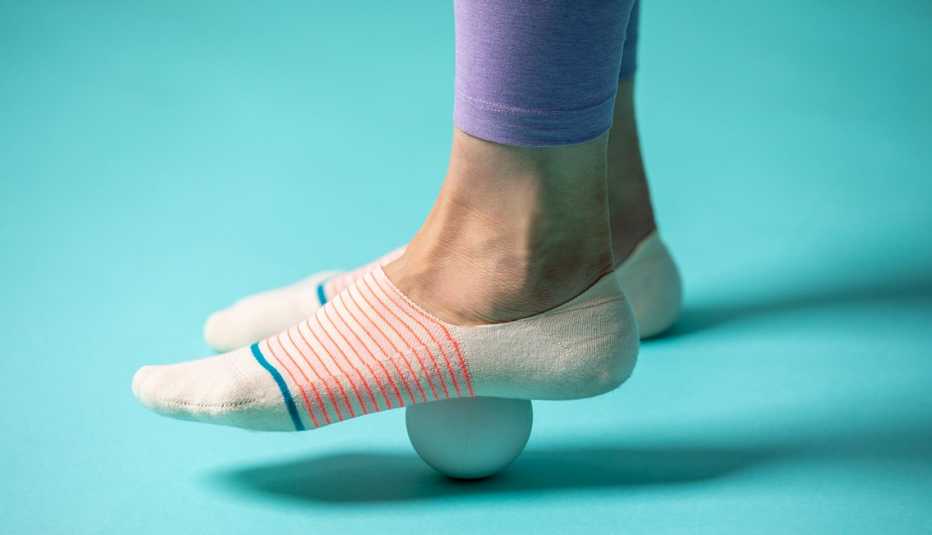Staying Fit


Feet are often underappreciated. We don’t think much about them until they hurt or give us problems. But they are of course crucial to getting us around and keeping us balanced.
“Your feet carry your body through life. They are often neglected because they are mostly packed away in socks and shoes,” said Melissa Burgard, a certified yoga teacher at Yoga Racoon in Germany, who specializes in teaching adults above 50. “But taking proper care of your feet will bring very many benefits.”


AARP Membership— $12 for your first year when you sign up for Automatic Renewal
Get instant access to members-only products and hundreds of discounts, a free second membership, and a subscription to AARP the Magazine.
A weak foot reduces your stability and balance, which increases your chances of falling. Unintentional falls are the leading cause of injury and injury deaths among adults age 65 and older, and more than 95 percent of hip fractures are caused by falling, according to the Centers for Disease Control.
“Foot mobility is especially important for older adults to help preserve a full range of motion in the feet,” said Samantha Deutchman, a certified personal trainer at Shop Yoga Strong. “Since the feet are anchors for our entire body … having adequate foot mobility is key to maintaining full-body health.”
Why feet become weaker
There are many reasons why foot mobility naturally declines in older adults. For instance, as you get older, the tissues in your feet become stiffer, which results in a decreased range of motion.
Also, joint mobility often lessens with age, which affects the amount of force that propels you forward as you walk. Unfortunately, these developments can result in foot pain and reduce your overall foot strength, which increases your chances of falling.
But here’s the good news – with the right exercises, you can improve your foot mobility, balance and coordination, which reduces your risk of falling.
Below, Deutchman and Burgard describe 10 super-efficient foot mobility exercises. So grab a chair or mat and boost your balance and foot strength with these moves.
Try these 10 foot mobility exercises


1. Ankle circles
Ankle circles are a great way of improving your ankle mobility. Here’s how to do them:
Step 1: While sitting, perform slow and controlled ankle circles in the clockwise direction.
Step 2: Repeat the move on the same feet in the counterclockwise direction.
Step 3: Perform the move five times in each direction.


2. Toe pulls
Toe pulls are an excellent way of building foot control and stabilizing your pace when walking. Here’s how to do them:
Step 1: Standing or sitting, try lifting only your big toe off the ground while keeping your other four toes on the ground.
Step 2: Now try repeating the move with each of your other toes.
Step 3: Aim to lift each toe five times.


3. Calf raises
Calf raises primarily strengthen your calf muscles (on the back of your lower leg), which support your weight and activity. Here’s how to do them:











































































More From AARP
Staying Fit
For more balance videos, go to our Staying Fit page
The Safest Way for Older Adults to Get Up From a Fall
Use these tactics if you ever take a spill
7 Things Your Toes Could Say About Your Health
Doing a little digit detective work might help you spot heart disease, diabetes and more